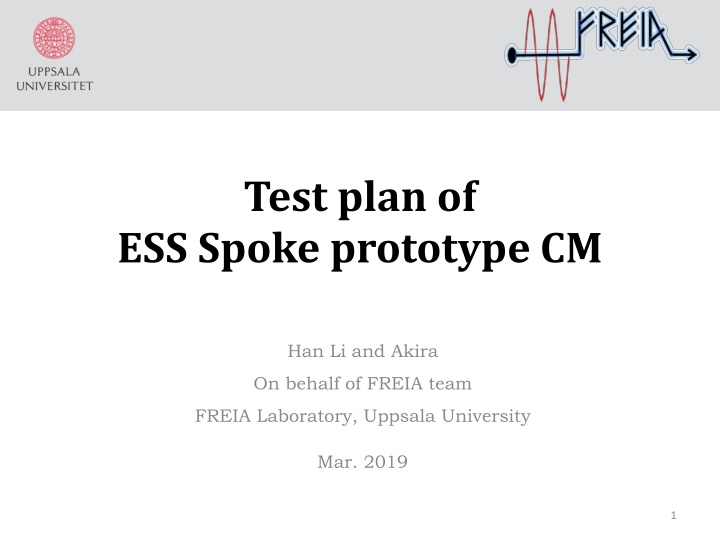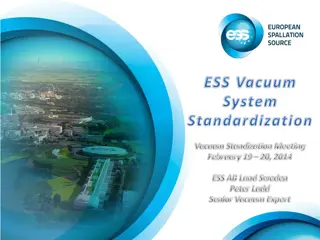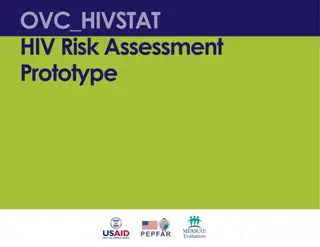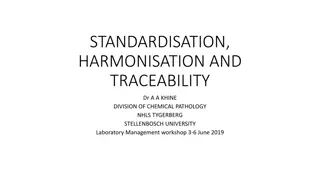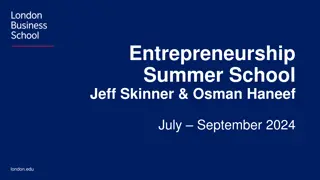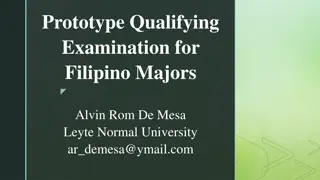Test Plan for ESS Spoke Prototype CM at FREIA Laboratory, Uppsala University
This test plan outlines the detailed schedule and tasks for testing the ESS (European Spallation Source) Spoke prototype CM conducted by Han Li and Akira on behalf of the FREIA team at FREIA Laboratory, Uppsala University. The plan includes activities such as warm-up, cool-down, cavity conditioning, frequency checks, RF tests, and various stability and performance tests. It also lists tests in order of priority, such as sensitivity to pressure fluctuations, frequency shifts, mechanical modes, and stabilization of cavity fields. Detailed procedures for each test are provided, along with images illustrating the testing process and setup.
Download Presentation

Please find below an Image/Link to download the presentation.
The content on the website is provided AS IS for your information and personal use only. It may not be sold, licensed, or shared on other websites without obtaining consent from the author.If you encounter any issues during the download, it is possible that the publisher has removed the file from their server.
You are allowed to download the files provided on this website for personal or commercial use, subject to the condition that they are used lawfully. All files are the property of their respective owners.
The content on the website is provided AS IS for your information and personal use only. It may not be sold, licensed, or shared on other websites without obtaining consent from the author.
E N D
Presentation Transcript
Test plan of ESS Spoke prototype CM Han Li and Akira On behalf of FREIA team FREIA Laboratory, Uppsala University Mar. 2019 1
Time Task comment Week 8 (18th 22nd ,March) DB station full power test with Load; RF distribution installation; SEL build up; Corresponding software prepare; Arc detector and electron pick up installation; Interlock validation done Week 9 and 11 (25th -15th ,March) FPC warm conditioning done Week 13/14? (25th, March-5th ,April) cool down of the CM; Cavity frequency checking ( for one cavity); Coupler cold conditioning. Week 15 (8th -12th ,April): Cavity 2 (Giulietta) cavity conditioning Week 16 and 17 (15th -26th ,April) Cavity 2 (Giulietta) tune to right frequency and RF test Week 18 (29th , April-3rd ,May) Cavity 1 (Romea) conditioning Week 19 and 20 (6th -17th ) Romea tune to right frequency and RF test Week 21 (29th -3rd , May) Two cavities RF test together Depend on the status of the Electrosys station Week 21 : (20th -24th , May) warm up Cavity frequency checking ( for one cavity); 2
The list of tests in some order of priority 1. 2. 3. 4. 5. 6. 7. 8. 9. 10. Sensitivity to helium pressure fluctuations 11. Frequency shift due to cool down 12. Mechanical modes (microphonics) 13. Filling time 14. Fast piezo tuner characteristic 15. Stabilization of the CM for long-term operation 16. Stabilization of the cavity field with LLRF using only RF compensation 17. Stabilization of the cavity field with LLRF using both RF and piezo tuner compensation 18. Onset and level of field emission 19. Multipacking 20. Q0 influence with different cool down procedure 21. Cryo related test both at 4 K and 2 K 22. Overall test of electronics/ radiations. Central cavity frequency and spectrum of higher-order modes (HOM) Loaded Q Cavity position alignment lack of laser system Steady & Dynamic heat load for each & both cavities Nominal & Max gradient Q0 (calorimetric measurement) Coupler conditioning optimized procedure Tuning range of the slow step tuner Dynamic Lorentz force detuning 3
Warm test Cool down Cold test Warm up Frequency shift due to cool down Cavity position alignment at cold Coupler cold conditioning Central cavity frequency and spectrum of HOM Qe Cavity position alignment at warm Frequency shift vs. T Cavity conditioning (one by one) CRYO Central frequency and HOM Loaded Q and Qe Sensitivity to helium pressure fluctuations_1 VNA Coupler warm conditioning ( one by one) SGD signal generator driven Helium level profile Steady heat load Max load on the cryo-system stability Q0 Dynamic heat load Nominal & Max gradient Tuning range of the slow step tuner Mechanical modes (microphonics) Sensitivity to helium pressure fluctuations_2 SEL Lund system Lund university Filling time Stabilization of the cavity field with LLRF using only RF compensation / with fast piezo Dynamic Lorentz force detuning Fast piezo related testing 4
Warm test detail Process or check item Work DescriptionTeam Build loop and cabling Loop and special device Power Low power Build SEL ( two systems) RF SEL: Copper cavity, SEL, FPGA, interlock switch, RF switch and RF station validation of instruments SEL, FPGA software debuging SGD: Signal generater driven system, interlock system, coupler vacuum, RF station, conditioning software instrumentation check RF VNA: VNA, frequency auto checking software S parameter measurement RF VNA Get central cavity frequency Simply estimate the coupling factor and Qe RF VNA Qe Cavity position alignment RF Check cavities position 5
Warm test detail Process or check item Team Loop and special device Power Work Description Validation of software Set related parameters in the software and vacuum interlock thredshold Ramp up forward power to 400 kW Increase pulse width to 3.5ms Get an optimal procedure for RF conditioning Low power SGD: software, RF station, preparing of Interlock system CTRL RF High power Coupler warm conditioning CTRL RF SGD: RF station, FREIA software 6
Cool down test detail Team Loop and special device Process or check item Work Description VNA, frequency auto checking software Frequency shift vs. T RF Frequency shift due to cool down Cool down to 4 K CRYO let the LHe evaporate to low levels (below 30%) Cavity level profile CRYO VNA, frequency auto checking software Frequency shift vs. Pressure RF Frequency shift due to pressure Cool down to 2 K CRYO Cavity position alignment RF Check cavities position at cold With filling valve closed With filling valve opened (Note: only if required to power the cavities with continuous filling) Max load:apply heater power until the level and/or the pressure in the system shows instabilities Static heat loads CRYO Max power dissipation by the cavity CRYO 7
Cold test detail (I) Work Description Team Conditioning coupler with detuned cavity or with a frequency outside the cavity bandwidth Ramp up forward power to 350 kW Increase pulse width to 3.5ms Conditioning coupler and cavity at resonant frequency Ramp up 9MV/m Increase pulse width to 2.86 ms (flattop) Get central cavity frequency and high order mode Loaded Q and -3dB bandwidth Qe Loop and special device Power Process or check item High power SGD: RF station, FREIA software Data acquisition system Personal safty system Coupler Cold conditioning RF CTRL Cavity packet cold conditioning ( Guilietta first ) RF CTRL SEL: RF station FPGA, Interlock system, RF switch Data acquisition system Personal safty system Central frequency and HOM Loaded Q and Qe RF VNA Low power 8
Cold test detail (II) Team Loop and special device Power Process or check item Q0 Dynamic heat load Nominal & Max gradient Tuning range of the slow step tuner Mechanical modes (microphonics) Work Description Tune the cavity to the nominal frequency Runing pulse SEL from low power with 3.5ms, 14Hz forward pulse Get Q0 value vs. gradient Checking the radiation Increas the forward power until reaching the nominal /max gradient Measure dynamic heat load at different power level Use I/Q meadth to check the mechanical modes Use Lund system to generator step pulse input Use FPGA to check the frequency shit during the pulse Check filling time Lund system and SEL RF CRYO Low SEL: SEL, FPGA, RF station Interlock system, RF switch, Helium gas flowmeter, Data acquisition system, Personal safty system High Power Lund system , FPGA, RF station Data acquisition system, Personal safty system Dynamic Lorentz force detuning Filling time RF ESS Overall test of radiations RF 9
Cold test detail (III) Team Loop and special device Power Process or check item Work Description Use Lund system to produce input pulse Stay at nomial gradient for a certain time to confirm the stabilization of the cavity field Fast piezo characteristic Fast online compensation Stabilization of the cavity field with LLRF using only RF compensation Lund system RF station Data acquisition system, Personal safty system CRYO RF High power Fast piezo related testing CTRL Lund Lund university 10
Warm up test detail Team Loop and special device Process or check item Frequency shift vs. Pressure Work Description Frequency shift due to pressure RF VNA CRYO Warm up to 4 K Frequency shift due to warm up RF VNA Frequency shift vs. T CRYO Warm up to 300 K 11
